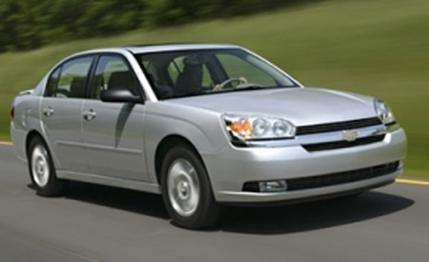 First Drive Review
First Drive Review
General Motors has been trying to build a " European car" for nearly as long as the Chicago Cubs have been trying to win another World Series, and with about as much success. European in this sense implies an exemplary degree of style, quality, performance, and technical virtuosity-think most German cars. Over the years, GM's efforts to emulate these elusive qualities have mostly produced such excremental automobiles as the Cadillac Cimarron, to cite just the worst example. GM is trying again, touting the 2004 Chevrolet Malibu as its latest European. But this time, instead of attempting to re-create a European car, GM simply crossed the Atlantic and snatched one from the cradle at Opel, its German subsidiary.
The platform, called the Epsilon, got its baptism in the Opel Vectra and Saab 9-3. GM then spent a reported $722 million (which includes retooling at its assembly plant in Fairfax, Kansas) to adapt the Epsilon for the U.S. market, being careful not to dilute its continental character, according to Bob Lutz, GM North America chairman and product czar. "The instructions to the team were, 'You pick up the European Epsilon platform, and you do not dumb it down for the American market.'"
Neither does Lutz want the new Malibu to be confused with the current model, which falls into the "not too bad" category and appeals mostly to municipal bureaucracies and car-rental companies. To avoid this stigma, Chevrolet plans to discourage fleet sales of the new Malibu, leaving that business to the old model, which will continue to be produced under a new name, the Chevrolet Classic, so Hertz and Avis need not despair.
The new Malibu's European personality is apparent the first time it hits a bump. There's a muffled "thunk" as the impediment is quickly digested by the car's suspension-struts in front (with forged aluminum control arms) and independent multilink in the rear (with twin-tube gas shocks). It's a pretty sophisticated setup for a car that's expected to top out in the mid-$20,000 range, about the average transaction price of a new car these days.
"We made some minor adjustments to make the suspension a little more compliant in keeping with the reality of American roads," Lutz admits. Still, the Malibu is surprisingly firm and controlled, with much less roll, dive, and "boingyness," a technical term coined by our Steve Spence, than one expects from a high-volume GM car. It grooves right along on interstates and makes transitions predictably into understeer when pushed through switchbacks. The electric power steering-a first in this class-eliminates hydraulic hoses and other parts, slightly improves fuel efficiency, and reduces noise. Brakes for the Malibu sedan are front disc and rear drum. We would prefer the four-wheel discs with ABS that are standard on the Maxx wagon (see sidebar).
Not necessarily from Europe are the Malibu's powertrains. The base model's engine is GM's familiar 2.2-liter Ecotec DOHC four-banger. Its 145 horsepower and 155 pound-feet of torque won't smoke the tires, but the cash constrained will appreciate its estimated EPA fuel economy of 24 mpg city and 34 mpg highway. The standard engine for LS and LT models is GM's new 3500 V-6. Well, not quite new. It's based on GM's venerable all-American 3400 pushrod motor, but, we are told, there's hardly a part in it that hasn't been redesigned.
This engine will see wider use in GM's lineup under a new strategy that slots its powertrains into three categories: "image"-one percent of the total, which will include exotics such as the future Cadillac 7.5-liter V-12; "high feature"-about 20 to 30 percent, which will be advanced-tech performance motors such as the forthcoming 255-hp, 3.6-liter DOHC V-6 with variable valve timing; and "high value"-70 to 80 percent, which are lower-cost engines with "appropriate technology" such as the Malibu's V-6, which, despite the absence of multiple valves and camshafts, cranks out a respectable 200 horsepower (30 more than the previous Malibu) and 220 pound-feet of torque while delivering decent mileage (22 mpg city and 30 mpg highway).
Another American element is the Malibu's styling, which can be described as "uninspired" or "clean and simple." Either way, it's not a head turner, as Lutz grudgingly concedes: "I think I might go for a slightly more adventurous design, although adventurous design isn't exactly what's done in this category."
More in the European vein is the Malibu's interior, which is also simply styled but in a coherent, elegant way. The instruments and controls are where they should be, and the use of faux wood and bright metal accents is refreshingly minimal. The seats, which come from a French supplier, are wide, well formed, and comfortable, and the general interior ambiance is that of a larger, more upscale car.
And that's the impression GM hopes will help convince 200,000 to 300,000 buyers a year to choose a Malibu over a Toyota Camry or Honda Accord. A tall order, but GM further hopes that the Malibu, among future models, will restore GM's passenger-car business, which has slipped from 876,432 Chevy units in 1998 to 746,595 in 2002. And GM also hopes the Malibu will help rebuild its reputation for quality cars. Wishful thinking, maybe, but Bob Lutz doesn't think so. "The importance of this car is the demonstration that General Motors will do world-class automobiles," he says confidently.